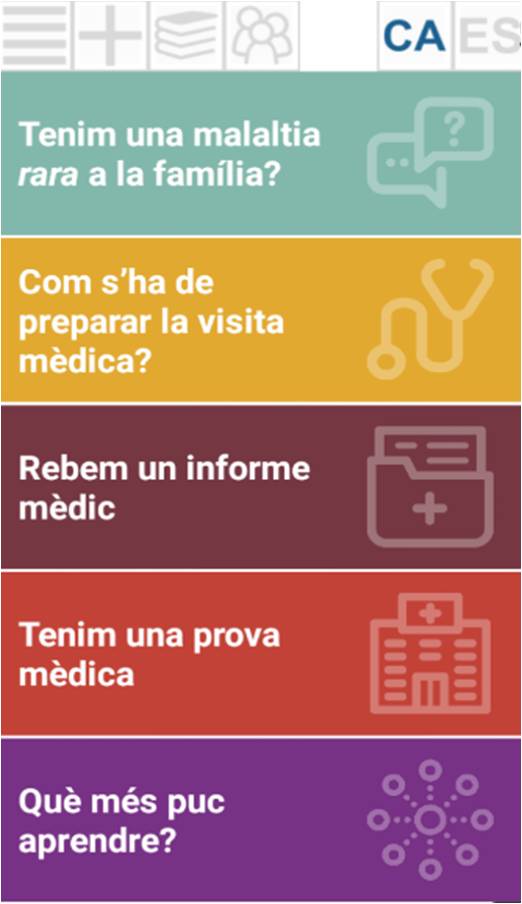JUNTS, overcoming socio-educational barriers and promoting literacy in health
This is according to the initial results of the project JUNTS (RecerCaixa, 2015) carried out by Rosa Estopà, a researcher with the Department of Translation and Language Sciences, together with researchers from the Open University of Catalonia and researchers from Vall d’Hebron Hospital and the FEDER.

On 21 February, coinciding with awarding of the grants of the eighth RecerCaixa call, Rosa Estopà, a researcher of IULATERM and a tenured lecturer with the Department of Translation and Language Sciences (DTCL) at UPF, presented the preliminary results of the first two years of the project JUNTS (RecerCaixa 2015) that she is conducting together with Manuel Armayones, a researcher at the Open University of Catalonia (UOC).
The project JUNTS is challenged with bringing medical and health-related information to families with children suffering from rare diseases, in order to promote empowerment in a more symmetrical communication model between doctor and patient. Hence, among other results, it has compiled the first picture dictionary for children; and it has built the application COMJunts to help families get through situations of communication with health professionals.
Difficulty understanding medical terminology causes anxiety
In-depth interviews have been carried out with families through which it has been possible to detect the main anxieties generated during communication with health professionals. Examples of this could be the difficulty of understanding the terminology used in the medical world. Also, the need to establish trust relationships with professionals has been seen to be a central axis of good communication.
Cognitive and linguistic barriers that hinder understanding have been detected
Medical reports have been studied in order to isolate linguistic-discursive parameters that hinder the understanding of these texts which are so important for families. It has been seen how the construction of very long sentences, the order of words, the concentration of unexplained terminology, the abusive use of acronyms, symbols, non-standard abbreviations, many typographical errors, varying terminology the lack of connective elements between phrases, are some of the cognitive and linguistic barriers that hinder understanding.
A more explicitly drafted medical report is more understandable to the non-expert reader
A exercise was conducted with subjects not linked to the field of rare diseases or the health field, consisting of contrasting the comprehension of a real medical report with another adapted report on the basis of the parameters previously detected as being obstacles for comprehension. The results of this experiment, processed using the GRANMO calculator, show that between the level of understanding of the original and the adapted text there is a significant statistical difference of +4.56 points. These results indicate that not even the most cultivated are able to understand a medical report and that, conversely, the less cultivated are able to understand an adapted medical report to which plain writing techniques have been applied that offer the maximum information that can be assimilated by non-expert readers.
The application COMJunts helps families to communicate with health professionals
The results from all the studies have allowed building the application COMJunts, a tool that helps families to get through the main situations of communication with health professionals. The thread of the app are seven challenges that invite the families to put themselves in different communicative situations and deal with the challenges of each one. For example, some such situations are: when we are told it’s a rare disease, when we have a medical visit, when we are given a medical report, or when a medical test needs performing on our child. Each challenge consists of a video with testimonials by affected families and health professionals, a hypertext suited to the cognitive needs of the families, a basic dictionary aimed at the patient, and additional advice, resources and links.
The application has involved linguists, psychologists, families, patient associations and doctors and will be prescribed and used by FEDER (Spanish Federation of Rare Diseases) patient associations. The contents of the application COMJunts have involved researchers at UPF, UOC and the Clinical and Molecular Genetics Area and the Rare Diseases Unit of Vall d’Hebron Hospital, in addition to FEDER and families who belong to FEDER.
